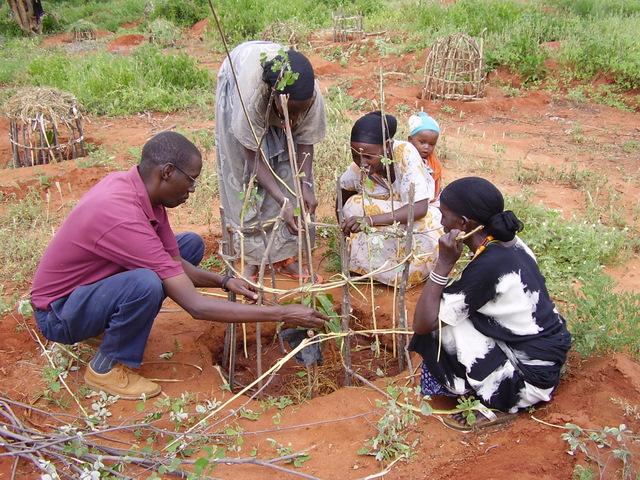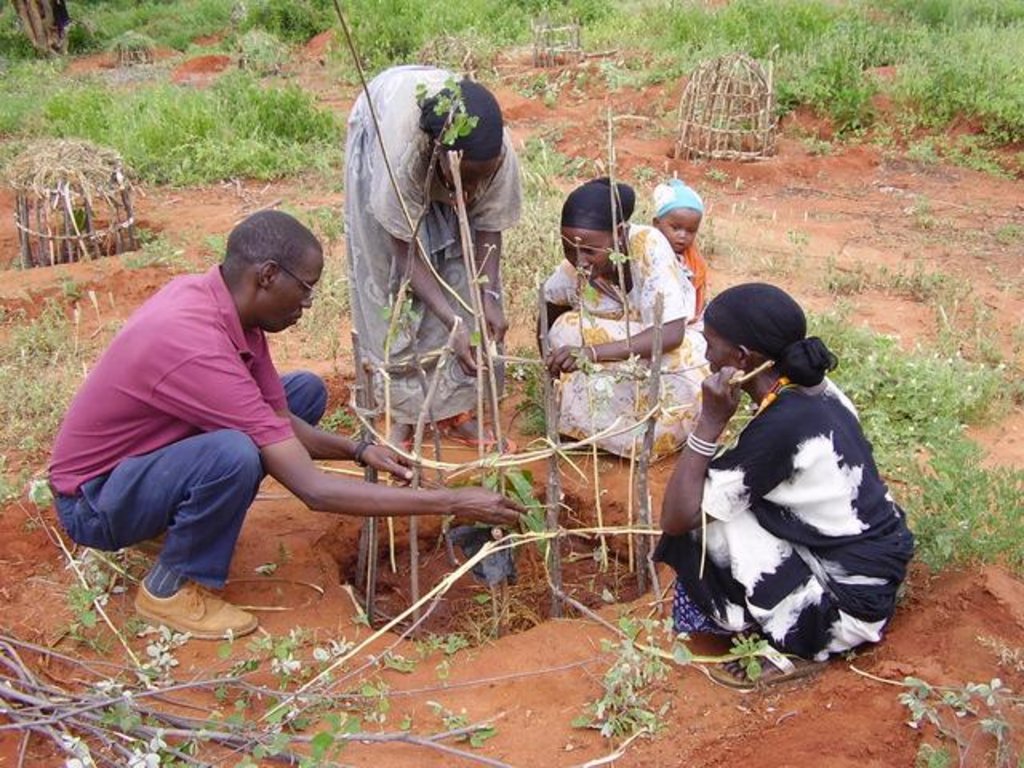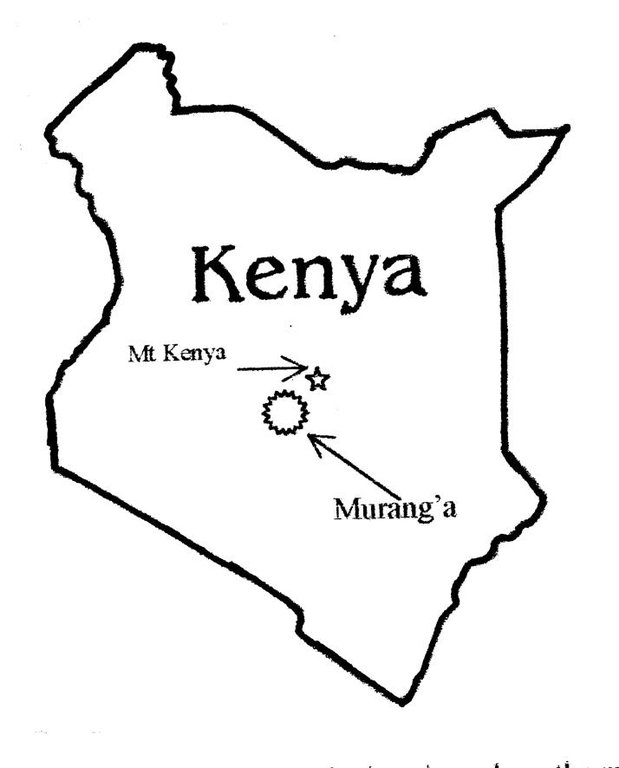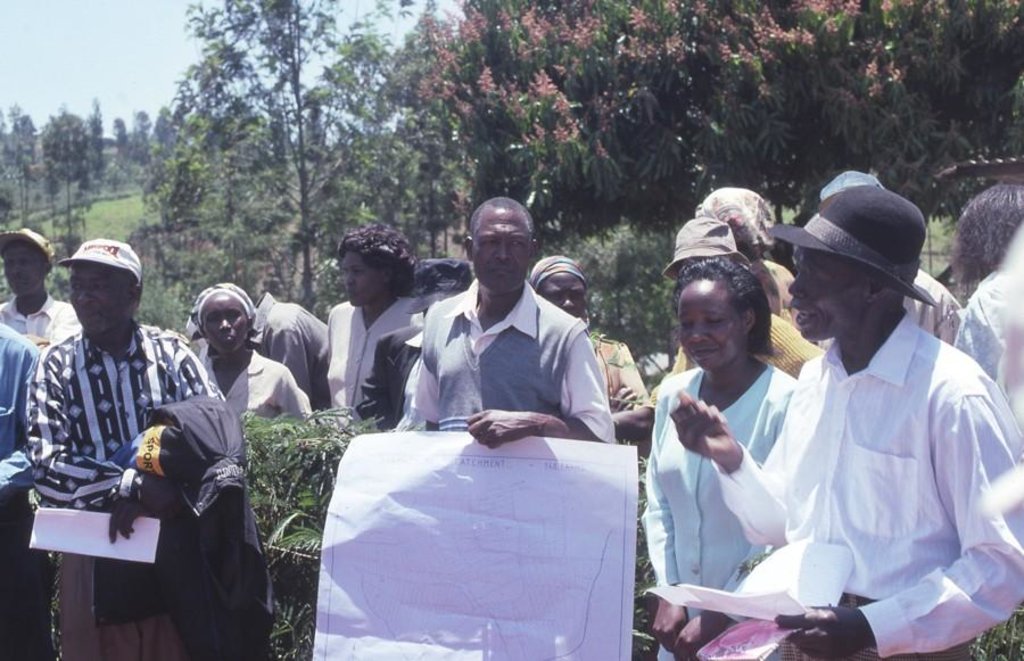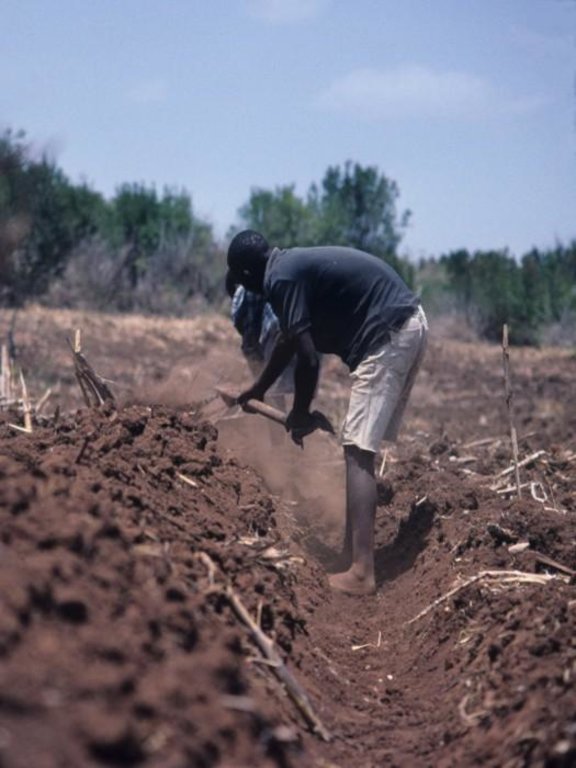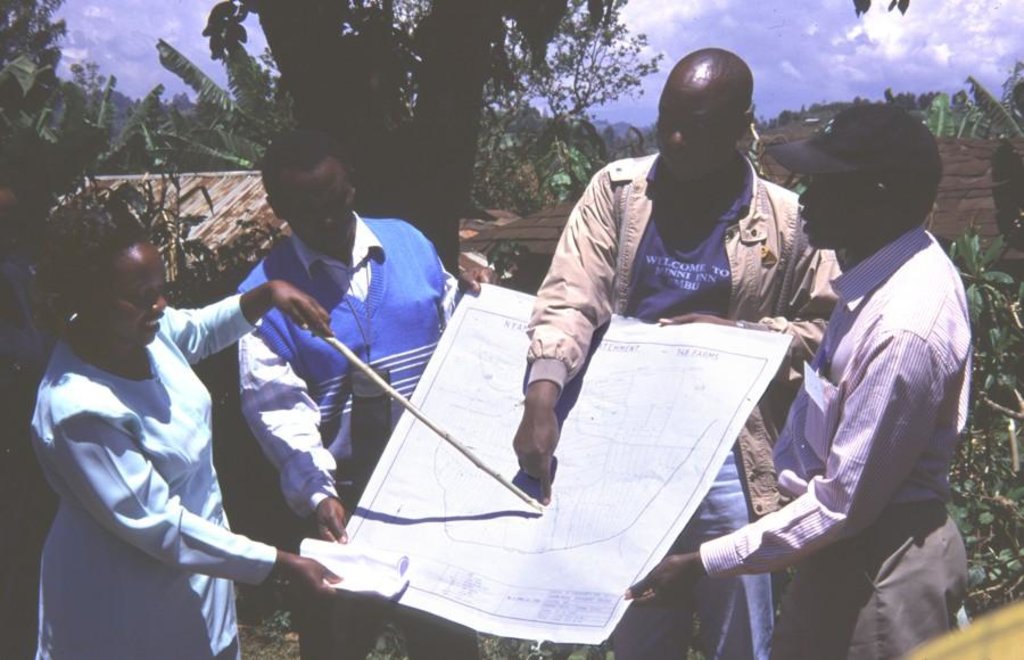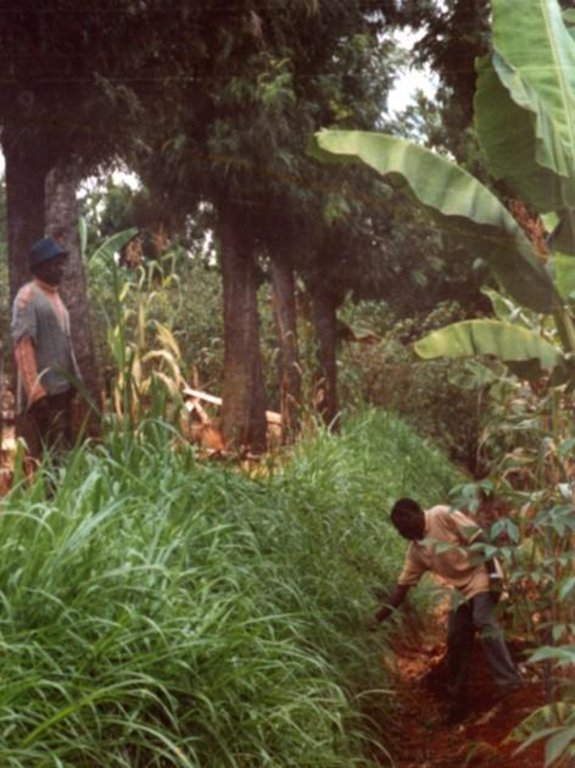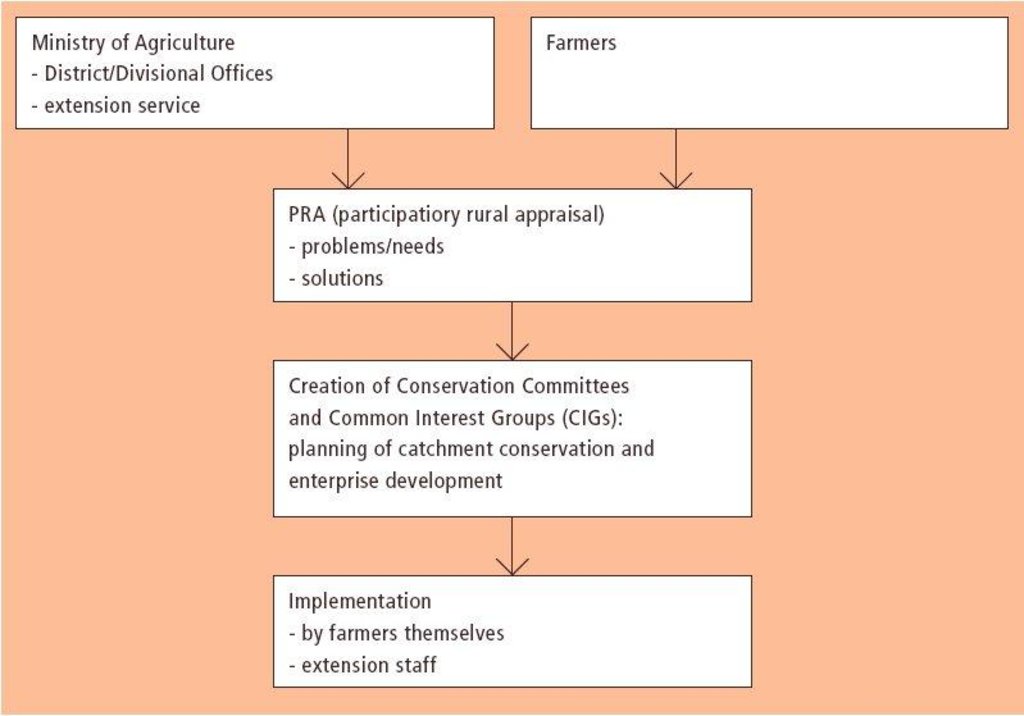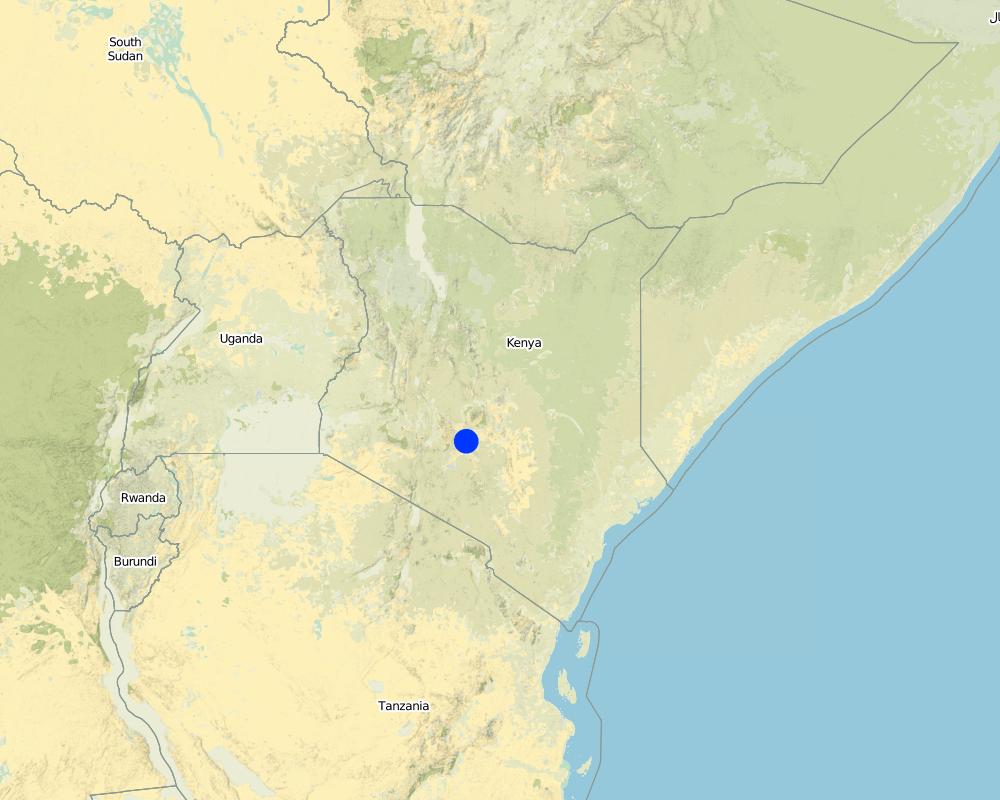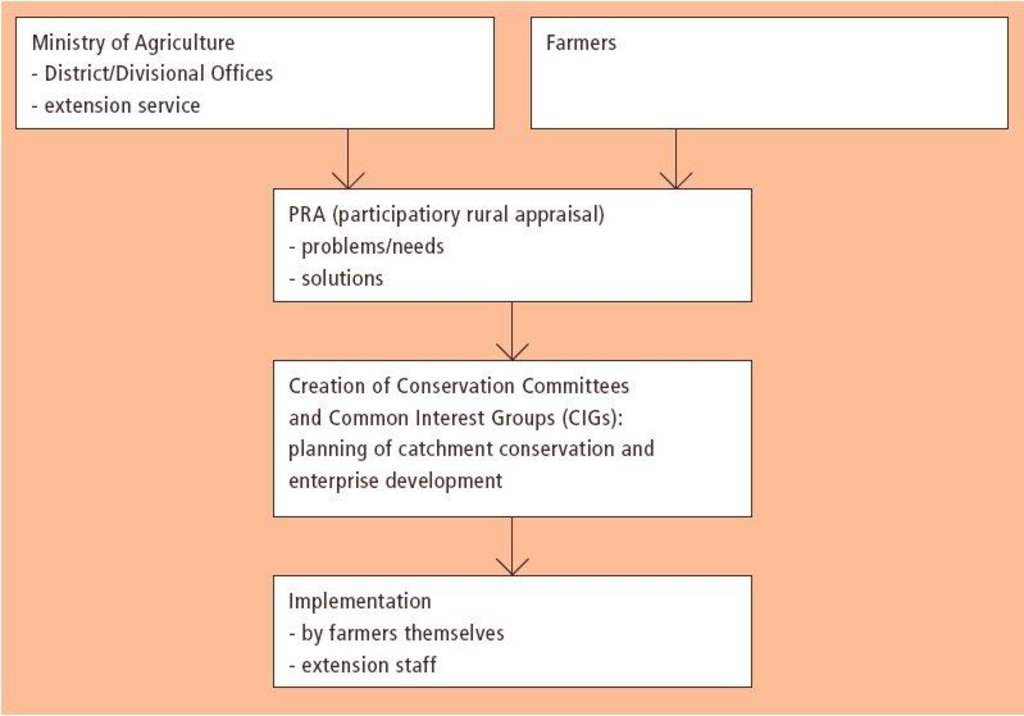Catchment Approach [Кения]
- Создание:
- Обновить:
- Составитель: James Gatero Njuki
- Редактор: –
- Рецензенты: Fabian Ottiger, Deborah Niggli
approaches_2361 - Кения
Просмотреть разделы
Развернуть все Свернуть все1. Общая информация
1.2 Контактные данные специалистов и организаций, участвующих в описании и оценке Подхода
Специалист по УЗП:
Название проекта, содействовавшего документированию/оценке Подхода (если применимо)
Book project: where the land is greener - Case Studies and Analysis of Soil and Water Conservation Initiatives Worldwide (where the land is greener)Название организации (-ий), содействовавших документированию/оценке Подхода (если применимо)
FAO Food and Agriculture Organization (FAO Food and Agriculture Organization) - ИталияНазвание организации (-ий), содействовавших документированию/оценке Подхода (если применимо)
Ministry of Agriculture, Livestock and Fisheries (MoA) - Кения1.3 Условия, регламентирующие использование собранных ВОКАТ данных
Составитель и ответственный/-ые специалист(-ы) согласны с условиями, регламентирующими использование собранных ВОКАТ данных:
Да
1.4 Ссылка (-и) на Анкету (-ы) по Технологиям УЗП
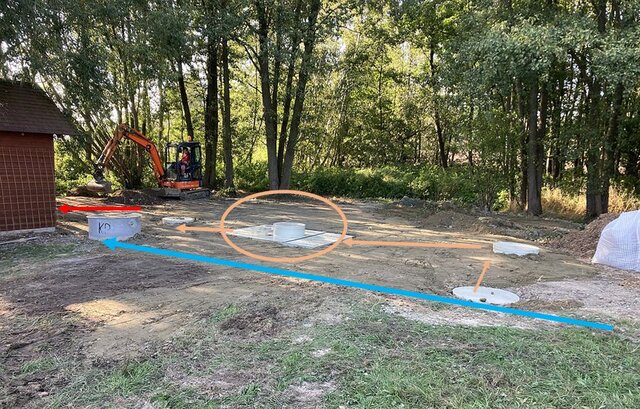
Drainage Biofilter [Чешская Республика]
Biofilters or “bioreactors” connected to agricultural tile drains are relatively inexpensive and space-saving measures with considerable potential to improve the quality of drainage water.
- Составитель: Antonín Zajíček
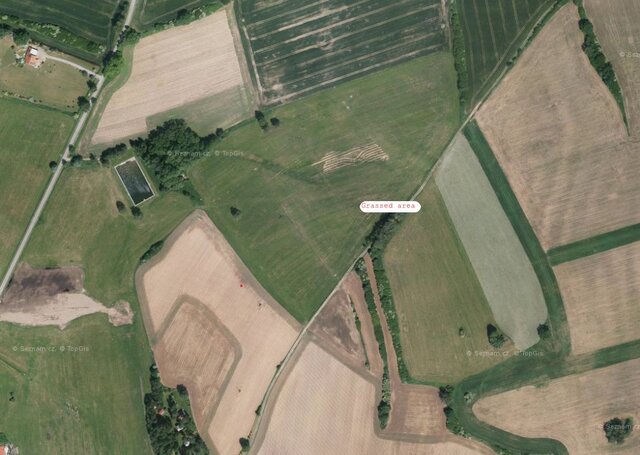
Grassing of Recharge Areas [Чешская Республика]
Grassing recharge zones of agricultural drainage systems significantly improves the quality of drainage water. It can be a useful, effective and relatively cheap measure for improvement of shallow groundwater quality.
- Составитель: Antonín Zajíček
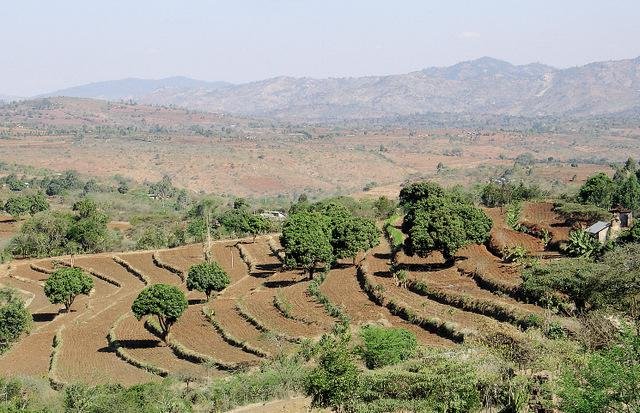
Les terrasses fanya juu [Кения]
Terrasses en talus (remblais) associées à un fossé, le long des courbes de niveau ou selon une douce pente latérale. Le sol est rejeté sur la partie supérieure du fossé pour former le talus, souvent stabilisé par la plantation d’herbes fourragères.
- Составитель: Kithinji Mutunga
2. Описание Подхода УЗП
2.1 Краткое описание Подхода
A focused approach to integrated land and water management, including soil and water conservation, where the active participation of the villagers - often organised through common interest groups - is central.
2.2 Подробное описание Подхода
Подробное описание Подхода:
The catchment approach promotes sustainable land management systems by conservation of a defined area (so-called micro-environments) through the active participation of the communities living there. It was launched in Kenya in 1988 to achieve greater technical and social impact - and at a more rapid pace - than the previous focus on individual farmers. This case focuses on a single catchment in a subhumid area of Central Kenya. The emphasis is on structural measures - especially fanya juu terraces - but vegetative systems are promoted also. Other activities are supported such as spring protection, improved crop and animal husbandry, agroforestry, fodder production, fish ponds and others. The specific objectives are to stimulate the implementation of a variety of SWC measures leading simultaneously to improved production. Each approach area is defined by cultural/administrative boundaries rather than strict hydrological watersheds or catchments (as its name confusingly implies).
A conservation committee is elected from amongst the focal community before problem identification begins. Technical staff from relevant government and non-government agencies (NGOs) are co-opted onto the committee. The approach then involves participatory methods of appraisal and planning of solutions. Land users, together with the co-opted subject matter specialists, pool their knowledge and resources. Common Interest Groups (CIGs) are formed, with the aim of self-help promotion of specific farm enterprises. Training is given to the members of the CIGs by the Ministry of Agriculture. The farmers carry out the majority of the work themselves: monetary or other tangible incentives are few. The end result is the micro-environment (catchment area) conserved for improved production, and left in the hands of the community to maintain and sustain.
The catchment approach was developed under the National Soil and Water Conservation Programme - supported by (Swedish) Sida - and continues to be promoted as the Focal Area Approach (FAA) under the National Agricultural and Livestock Extension Programme (NALEP), which is again supported by Sida. However, under NALEP there is less emphasis on soil and water conservation than the previous programme, and more focus on promotion of productive enterprises.
The catchment approach is linked to cultural or administrative boundaries, rather than to hydrological watersheds. This emphasis on social units and integrated land management is becoming more common worldwide. In Kenya the approach is constantly evolving and has recently been renamed the 'Focal Area Approach'.
2.3 Фотографии, иллюстрирующие Подход
2.5 Страна/ регион/ место, где применялся Подход
Страна:
Кения
Административная единица (Район/Область):
Central Province /Muranga District/Kangema divi
Более точная привязка места:
Centre latitude:-0.721 Centre longitude:: 37.156
Map
×2.6 Даты начала и окончания реализации Подхода
Год начала реализации:
1987
Год окончания (Если Подход больше не применяется):
2000
2.7 Тип Подхода
- в рамках проекта/ программы
2.8 Каковы цели/ задачи Подхода
The Approach focused mainly on SLM with other activities (The approach also included other activities like energy saving technologies and Agroforestry. It also involved collaboration with othe sectors like public health, fisheries, water. Also new technologies were introduced like water prospecting.) The main aims are to contribute to increased production among farmers and pastrolist through advise on sound land husbandry, conserve agricultural lands affected by erosion, create awareness on importance of soil conservation and introduce on-farm tree planting practices.
The SLM Approach addressed the following problems: lack of tangible and assessable impact of SWC activities, technically or socially, slow implementation of SWC, underlying problems of poverty, declining soil fertility, soil erosion and fuelwood shortage.
2.9 Условия содействующие применению Технологии/ Технологий в рамках Подхода или затрудняющие его
Наличие/ доступность финансовых ресурсов и услуг
- затрудняют
Lack of capital hinders farmers from investing in structures.
Treatment through the SLM Approach: farmers to work in group so that they can pool resources.
Институциональные условия
- затрудняют
There was no institutional linkages to provide synergy
Treatment through the SLM Approach: collaboration forums through PRA were encouraged.
Нормативно-правовая база (землевладение, права на земле- и водопользование)
- содействуют
The existing land ownership, land use rights / water rights moderately helped the approach implementation: Most land is individually owned, so there is no problem in that situation. Where land is rented, land users need to be persuaded to co-operate.
Осведомленность в области УЗП, доступность технической поддержки
- затрудняют
Lack of knowledge on better ways of conservation.
Treatment through the SLM Approach: training was carried out through courses, fielddays and demonstration.
3. Участие и распределение ролей заинтересованных сторон
3.1 Заинтересованные стороны, участвующие в реализации Подхода и их роли
- местные землепользователи/ местные сообщества
Working land users were work equally divided between men and women. Groups consist out of both. Many joint activities but men and women still stick to some traditional gender-related agricultural activities. For example women often concentrate on food crops, men on cash crops. The poor resource group has been involved by participating in trainings, in election of catchment committee and during committee meetings.
- эксперты по УЗП/ сельскому хозяйству
- учителя/ преподаватели/ школьники / студенты
- государственные власти (отвечающие за планирование или принятие решений)
Ministry of Agriculture, politicians
3.2 Участие местных землепользователей/ местных сообществ на разных стадиях реализации Подхода
| Участие местных землепользователей/ местных сообществ | Перечислите участников и опишите их вовлеченность | |
|---|---|---|
| инициирование/ мотивация | интерактивное | public meetings; they were involved in making decisions on boundaries. |
| планирование | интерактивное | rapid/participatory rural appraisal, public meetings, interviews/questionnaires; they were involved in providing information during the PRA and also the formulation of the community action plan |
| выполнение | самоорганизация | responsibility for major steps; they were invoved in the actual work in the farms. implemented by community members |
| мониторинг/ оценка | пассивное | Mainly: interviews/questionnaires; partly: reporting; |
| Research | нет | only during trainings |
3.3 Схема реализации (если имеется)
3.4 Принятие решений по выбору Технологии/ Технологий УЗП
Укажите, кто принимал решение по выбору применяемой Технологии/ Технологий:
- в основном землепользователи при поддержке специалистов по УЗП
Поясните:
Land user driven (bottom-up). The choice on the technology to use is made primarily by the technical specialists based on the prevalent type of erosion on each farm and farmers preference.
Decisions on the method of implementing the SLM Technology were made by mainly by land users supported by SLM specialists. Land user driven (bottom-up). The method of implementation is decided based on the farmers capabilities and resources at his disposal e.g. where labour is a constraint and finances limiting, biological conservation measures would be considered more.
4. Техническая поддержка, повышение компетенций и управление знаниями
4.1 Повышение компетенций/ обучение
Проводилось ли обучение землепользователей/ других заинтересованных лиц?
Да
Укажите, кто проходил обучение:
- землепользователи
- extensionists/trainers, school children/students (2), teachers (3)
Тип обучения:
- в ходе работы
- обмен опытом между фермерами
- опытные участки
- общие собрания
- курсы
Рассматриваемые темы:
including layout of measures; agroforestry; soil erosion and measures to control it; energy conservation; food preservation - as well as for specific farm enterprises. Carried out mainly through farm visits by Ministry of Agriculture agents.
4.2 Консультационные услуги
Есть ли у землепользователей возможность получать консультации?
Да
Укажите, где именно оказываются консультационные услуги:
- на полях землепользователей
Описание/ комментарий:
Name of method used for advisory service: Catchment Approach: Formation of Conservation Committees. Implementation of techniques/technologies, Training on techniques/technologies, farm visits, field demonstrations, field days.
Advisory service was carried out through: Government's existing extension system (Both generalists and SWC specialists.) Extension staff: Mainly government employees.
Advisory service is quite adequate to ensure the continuation of land conservation activities; There are extension staff posted at locational level who are well trained.
4.3 Институциональная (организационная) поддержка
В ходе реализации Подхода были ли организованы новые институциональные структуры или поддержаны уже существующие?
- да, умеренно
Укажите уровень, на котором структуры были укреплены или вновь созданы:
- местные
Укажите тип поддержки:
- повышение компетенций/ обучение
4.4 Мониторинг и оценка
Являются ли мониторинг и оценка частью Подхода?
Да
Комментарии:
bio-physical aspects were regular monitored through observations
technical aspects were ad hoc monitored through measurements
socio-cultural aspects were ad hoc monitored through observations
area treated aspects were regular monitored through observations
no. of land users involved aspects were regular monitored by 0 through measurements; indicators: None
management of Approach aspects were ad hoc monitored by 0 through observations; indicators: None
There were few changes in the Approach as a result of monitoring and evaluation: There have been few changes, but there is some enhanced collaboration between agencies, and - more income generating activities have been identified and implemented through common interest groups for crop production, marketing and livestock.
4.5 Научные исследования
Были ли научные исследования частью Подхода?
Да
Напишите подробнее и назовите тех, кто выполнял исследования:
Specific problems are researched as they arise. A strong research-extension linkage is being built up. Monitoring of the progress of the overall programme also takes place.
5. Финансирование и внешняя материальная поддержка
5.1 Годовой бюджет мероприятий по УЗП в рамках Подхода
Если точный годовой бюжет неизвестен, укажите примерный диапазон затрат:
- < 2000
Комментарий (например, основные источники финансирования/ ключевые доноры):
Approach costs were met by the following donors: international (SIDA/trainnig, transport allowances etc): 70.0%; government (national - Office, personell): 20.0%; local community / land user(s) (Labour, materials): 10.0%
5.3 Субсидии на отдельные затраты (включая оплату труда)
- оборудование
| Укажите, какие ресурсы были субсидированы | В какой степени | Опишите субсидии подробнее |
|---|---|---|
| инвентарь/ инструменты | Given to catchment committee for use in catchment | |
- сельскохозяйственные
| Укажите, какие ресурсы были субсидированы | В какой степени | Опишите субсидии подробнее |
|---|---|---|
| семена | Tree seeds for group nursery establishment | |
Если труд землепользователя был существенным вкладом, укажите, был ли этот вклад:
- добровольный
Комментарии:
All labour is provided on a voluntary basis.
5.4 Кредитование
Предоставлялись ли в рамках Подхода кредиты на мероприятия УЗП?
Да
Укажите условия предоставления (процент, окупаемость и т.д.):
This is not provided directly, though a savings and credit 'stakeholder kitty' revolving fund is being promoted and developed.
6. Анализ влияния и заключительные положения
6.1 Влияние Подхода
Сумел ли Подход помочь землепользователям внедрить и поддерживать технологии УЗП?
- Нет
- Да, немного
- Да, умеренно
- Да, существенно
Intensified use of manures. The land user also adopted the construction of retention ditches. The improvements to SWC are moderate: these have been mainly through fanya juu and level bench terraces
Сумел ли Подход разрешить правовые проблемы землевладения/ землепользования, препятствующие использованию технологий УЗП?
- Нет
- Да, немного
- Да, умеренно
- Да, существенно
The approach through catchment committee was able to persuade the prople leasing land to undertake conservation measures.
Did other land users / projects adopt the Approach?
- Нет
- Да, немного
- Да, умеренно
- Да, существенно
Spread has been limited to one Non-Governmental Organisation in this particular case study area.
- Нет
- Да, немного
- Да, умеренно
- Да, существенно
6.3 Долгосрочная устойчивость мероприятий в рамках Подхода
Могут ли землепользователи самостоятельно (без внешней поддержки) продолжать применение того, что было реализовано в рамках Подхода?
- нет уверенности
Если нет или нет уверенности, объясните почему:
Interventions are likely to continue and be maintained, but this depends on common interest groups continuing to function actively.
6.4 Сильные стороны/ преимущества Подхода
| Сильные стороны/ преимущества/ возможности по мнению землепользователей |
|---|
| Much improved extension/training - research linkages have been forged (How to sustain/ enhance this strength: Continue focussed training/strengthen research-extension linkage.) |
| New and productive farm enterprises have been promoted under the catchment approach alongside better SWC (How to sustain/ enhance this strength: Continue to introduce/support where appropriate through Common Interest Groups.) |
| Сильные стороны/ преимущества/ возможности по мнению составителя или других ключевых специалистов |
|---|
| Genuine community participation has been achieved under this approach (How to sustain/ enhance this strength: Continue with participatory training.) |
| There is evidence of 'ownership' by the community which implies a feeling that what has been achieved is due to communal efforts and belongs to them (How to sustain/ enhance this strength: Further training is more effective when benefits are appreciated in this way.) |
6.5 Слабые стороны/ недостатки Подхода и пути их преодоления
| Слабые стороны/ недостатки/ риски по мнению землепользователей | Возможные пути их преодоления/снижения? |
|---|---|
| Lack of material incentives like seeds and fertilizers | Assist the farmers with the credit. |
| Слабые стороны/ недостатки/ риски по мнению составителя или ответственных специалистов | Возможные пути их преодоления/снижения? |
|---|---|
| In many places there is a lack of availability of inputs | Provide better credit facilities for CIGs/farmers generally. |
| Technologies tend to be implemented uniformly, not site-specifically | SWC practices should be matched to each particular situation, eg structural measures such as fanya juu terraces should be promoted only where necessary, that is where agronomic and vegetative measures do not provide sufficient protection. |
| As yet uncertainty about continuation in specific areas if direct support stops after only one year | Don't abruptly terminate this support after one year: continue approach for at least two or three years in each catchment (approach area). |
| inadequate funding | Increase the funding. |
| Too small an area (of the country) is currently covered by NALEP | More staff required: more effective use of staff. |
7. Справочные материалы и ссылки
7.1 Методы сбора/источники информации
- выезды на места, полевые обследования
- опросы землепользователей
7.2 Ссылки на опубликованные материалы
Название, автор, год публикации, ISBN:
The catchment approach is linked to cultural or administrative boundaries, rather than to hydrological watersheds. This emphasis on social units and integrated land management is becoming more common worldwide. In Kenya the approach is constantly evolving and has recently been renamed the 'Focal Area Approach'.
Ссылки и модули
Развернуть все Свернуть всеСсылки

Drainage Biofilter [Чешская Республика]
Biofilters or “bioreactors” connected to agricultural tile drains are relatively inexpensive and space-saving measures with considerable potential to improve the quality of drainage water.
- Составитель: Antonín Zajíček

Grassing of Recharge Areas [Чешская Республика]
Grassing recharge zones of agricultural drainage systems significantly improves the quality of drainage water. It can be a useful, effective and relatively cheap measure for improvement of shallow groundwater quality.
- Составитель: Antonín Zajíček

Les terrasses fanya juu [Кения]
Terrasses en talus (remblais) associées à un fossé, le long des courbes de niveau ou selon une douce pente latérale. Le sol est rejeté sur la partie supérieure du fossé pour former le talus, souvent stabilisé par la plantation d’herbes fourragères.
- Составитель: Kithinji Mutunga
Модули
Нет модулей


